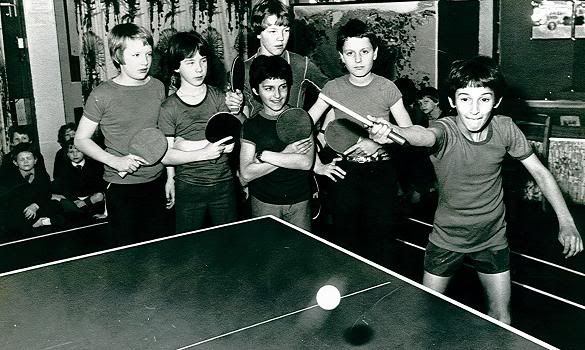One
street in Reading spawns 12 table tennis stars? In an extract from his new book, former Olympian Matthew Syed asks how?

Peter Charters Mr Charters was a teacher at the local primary school, a tall man with a moustache, a twinkle in his eye and a disdain for conventional teaching methods. He was the coach of almost all the after-school sporting clubs, the organiser of school sports day and inventor of a game called “bucket ball”, a kind of improvised basketball.
But Charters cared about one thing above all: table tennis. He was the nation’s top coach and a senior figure in the English Table Tennis Association. No child who passed through Aldryngton School in Reading was not given a try-out by Charters — and such were his zeal, energy and dedication to table tennis that anybody who showed potential was persuaded to take his or her skills forward at the local club.
At No 119 were the Syeds. Andrew, my brother, went on to become one of the most successful junior players in the history of British table tennis, winning three national titles before retiring due to injury in 1986. Matthew (that’s me) also lived at 119 and became a long-serving England senior No 1, a three-time Commonwealth champion and a two-time Olympian.
At No 274, just opposite Aldryngton, lived Karen Witt. She went on to win the Commonwealth championships and was widely considered one of the most brilliant female players of her generation.
At No 149, equidistant between the Syeds and the Witts, lived Andy Wellman. He was a top national player who won a string of titles, particularly in doubles.
Down at the bottom of Silverdale Road were Paul Trott, a leading junior, and Keith Hodder, an outstanding county player. Around the corner were Jimmy Stokes (England junior champion), Paul Savins (junior international), Alison Gordon (four times English senior champion), Paul Andrews (top national player) andSue Collier (England schools champion). I could go on.
For a period in the 1980s, this street and its immediate vicinity produced more outstanding table tennis players than the rest of the nation. One road among tens of thousands of roads; one tiny cohort of schoolkids against millions up and down the country. Silverdale Road was the wellspring of English table tennis: a ping-pong mecca that seemed to defy explanation or belief.
We like to think that sport is a meritocracy in which achievement is driven by talent and hard work, but it is nothing of the sort. Think of the thousands of potential table tennis champions not fortunate enough to live in Silverdale Road, with its peculiar set of advantages.

No comments:
Post a Comment